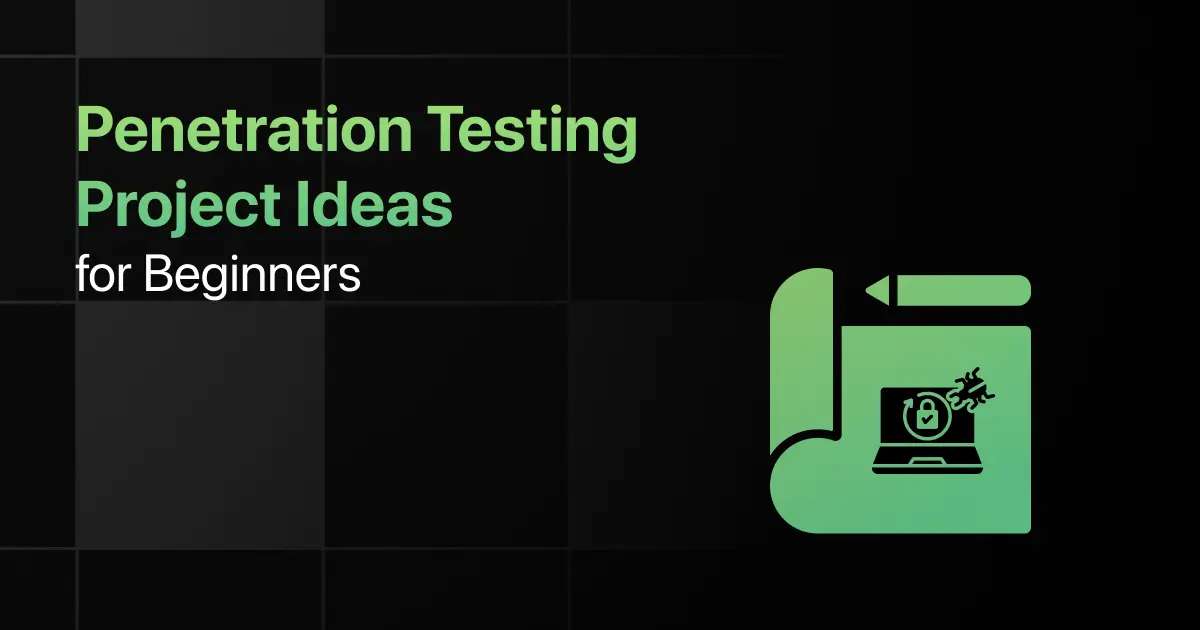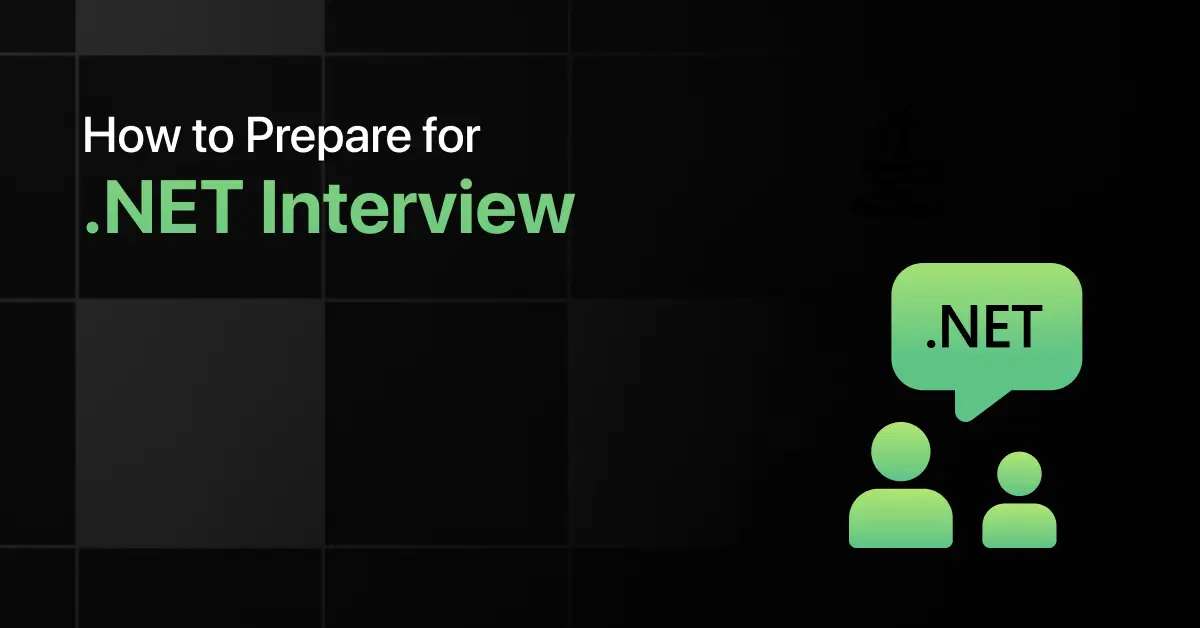Best Penetration Testing Project Ideas for Beginners

Are you a complete beginner ready to explore penetration testing? Learning to work on practical penetration testing projects is the best way to start your journey into ethical hacking and cybersecurity.
Here is a list of beginner-friendly penetration testing projects that will help you gain hands-on experience, develop essential security skills, and boost your professional profile.
10 Beginner-Friendly Penetration Testing Project Ideas – Overview
Here’s an overview of the 10 best Penetration Testing Project Ideas for beginners:
| S.No. | Project Title | Complexity | Estimated Time | Source Code |
|---|---|---|---|---|
| 1 | Vulnerability Scanning with Nmap & Nessus | Easy | 3 Hours | Get Started |
| 2 | Password Cracking with John the Ripper/Hydra | Easy | 2 Hours | Get Started |
| 3 | Web App Recon with OWASP ZAP | Easy | 3 Hours | Get Started |
| 4 | Metasploit Basics with Vulnerable VMs | Easy | 3 Hours | Get Started |
| 5 | Creating a Custom Wordlist for Brute Forcing | Easy | 2 Hours | Get Started |
| 6 | Wi-Fi Network Pentesting (WEP/WPA2 Cracking) | Medium | 4 Hours | Get Started |
| 7 | Manual SQL Injection on a Test Website | Medium | 4 Hours | Get Started |
| 8 | Privilege Escalation on Linux/Windows | Hard | 5 Hours | Get Started |
| 9 | Full Penetration Test on Multi-Tier Web App | Hard | 6 Hours | Get Started |
| 10 | Active Directory (AD) Penetration Testing | Hard | 5 Hours | Get Started |
Top 10 Penetration Testing Project Ideas for Beginners
Below are the Top 10 Penetration Testing Project Ideas for Beginners
1. Vulnerability Scanning with Nmap & Nessus
This is one of the penetration testing based projects that focuses on scanning a local network or virtual machines to identify open ports, running services, and known vulnerabilities.
You will learn how to conduct network reconnaissance and vulnerability assessments using automated tools.
Duration: 3 hours
Project Complexity: Easy
Key Concepts Covered:
- Port Scanning
- Service Enumeration
- Vulnerability Assessment
Implementation Steps:
- Set up a vulnerable virtual machine (e.g., Metasploitable).
- Use Nmap to discover hosts and scan for open ports.
- Perform service version detection and OS fingerprinting.
- Launch Nessus and perform a vulnerability scan on the target.
- Analyze the scan report to identify and interpret critical vulnerabilities.
Required Pre-requisites:
- Basic Linux command-line knowledge
- Understanding of networking concepts
- Familiarity with virtual machines
Resources Required:
- Nmap & Nessus tools
- Metasploitable2 VM
- VirtualBox or VMware
Real-World Application:
- Used by security teams for proactive network defense.
- Helps organizations meet compliance and audit requirements.
2. Password Cracking with John the Ripper or Hydra
This is one of the penetration testing mini projects that involves performing brute-force or dictionary attacks to crack password hashes or login credentials.
You will learn how password security works and how weak passwords can be exploited using cracking tools.
Duration: 2 hours
Project Complexity: Easy
Key Concepts Covered:
- Brute-force & Dictionary Attacks
- Password Hashing
- Authentication Protocols
Implementation Steps:
- Install John the Ripper and/or Hydra on your system.
- Obtain or generate sample password hashes or login targets.
- Choose or create a wordlist (e.g., rockyou.txt).
- Run John/Hydra with proper flags to perform the attack.
- Analyze results and identify cracked credentials.
Required Pre-requisites:
- Basic understanding of password hashing
- Familiarity with terminal commands
- Knowledge of authentication systems
Resources Required:
- John the Ripper or Hydra
- Sample password hashes or login services
- Wordlists (e.g., rockyou.txt)
Real-World Application:
- Assists in auditing password strength within systems.
- Demonstrates risks of weak or reused credentials in cybersecurity.
3. Web App Recon with OWASP ZAP
This project involves scanning a web application to identify common security vulnerabilities using OWASP ZAP.
You will learn how to perform automated web application reconnaissance and analyze vulnerabilities like XSS, SQLi, and security misconfigurations.
Duration: 3 hours
Project Complexity: Easy
Key Concepts Covered:
- Web Vulnerability Scanning
- OWASP Top 10
- Passive and Active Recon
Implementation Steps:
- Install and launch OWASP ZAP.
- Set up a test web application (e.g., DVWA or Juice Shop).
- Configure your browser or proxy to route traffic through ZAP.
- Perform passive and active scans of the target application.
- Review scan results and identify security issues.
Required Pre-requisites:
- Basic web application knowledge
- Understanding of HTTP/HTTPS
- Familiarity with proxy tools
Resources Required:
- OWASP ZAP
- Test web apps (DVWA, bWAPP, Juice Shop)
- A browser with proxy support
Real-World Application:
- Used by developers and testers to detect security flaws early.
- Helps ensure web applications are secure before deployment.
4. Metasploit Basics with Vulnerable VMs
This project involves using the Metasploit Framework to exploit known vulnerabilities on intentionally vulnerable virtual machines.
You will learn the fundamentals of exploitation, payload delivery, and post-exploitation using a professional pentesting tool.
Duration: 3 hours
Project Complexity: Easy
Key Concepts Covered:
- Exploitation Techniques
- Payload Deployment
- Post-Exploitation Basics
Implementation Steps:
- Set up a vulnerable VM (e.g., Metasploitable2) in a virtual environment.
- Launch Metasploit and identify a suitable exploit for the target.
- Configure payloads and target settings in Metasploit.
- Execute the exploit and gain access to the target system.
- Perform basic post-exploitation tasks (e.g., gather system info).
Required Pre-requisites:
- Basic Linux and terminal usage
- Understanding of networking and IP addressing
- Familiarity with virtual machines
Resources Required:
- Metasploit Framework
- Metasploitable2 or a similar vulnerable VM
- VirtualBox or VMware
Real-World Application:
- Provides foundational skills for ethical hacking and red teaming.
- Simulates real-world penetration test workflows in a safe environment.
5. Creating a Custom Wordlist for Brute Forcing
This is one of the simple penetration testing project ideas that focuses on generating tailored wordlists using tools like CeWL or Crunch based on a target’s publicly available information.
You will learn how to craft targeted attack vectors by leveraging social engineering and automated wordlist creation tools.
Duration: 2 hours
Project Complexity: Easy
Key Concepts Covered:
- Wordlist Generation
- Social Engineering Basics
- Brute Force Optimization
Implementation Steps:
- Choose a target (fictional or test) and gather public data (e.g., website text).
- Use CeWL to crawl web content and generate a base wordlist.
- Use Crunch to generate combinations of possible passwords.
- Combine and clean wordlists using text processing commands.
- Use the final list in a password cracking tool (optional test).
Required Pre-requisites:
- Basic Linux terminal knowledge
- Understanding of password cracking
- Familiarity with text processing
Resources Required:
- CeWL and Crunch
- Target webpage or sample data
- Text editors or command-line tools
Real-World Application:
- Enhances the success rate of targeted brute-force attacks.
- Assists in simulating realistic password attack scenarios for audits.
6. Wi-Fi Network Pentesting (WEP/WPA2 Cracking)
This project involves capturing and cracking Wi-Fi handshakes to test the security of WEP/WPA2-encrypted networks in a controlled lab.
You will learn how wireless encryption protocols work and how to exploit their vulnerabilities using packet capturing and dictionary attacks.
Duration: 4 hours
Project Complexity: Medium
Key Concepts Covered:
- Packet Sniffing
- Handshake Capture
- Dictionary-Based Cracking
Implementation Steps:
- Set up a test Wi-Fi network with WEP or WPA2 encryption.
- Use airmon-ng and airodump-ng to monitor traffic and capture handshakes.
- Deauthenticate a client to trigger a handshake (WPA2).
- Crack the captured handshake using aircrack-ng and a wordlist.
- Analyze results and test network access.
Required Pre-requisites:
- Knowledge of wireless networking
- Familiarity with Linux terminal commands
- Basic understanding of encryption types
Resources Required:
- Aircrack-ng suite
- Wi-Fi adapter that supports monitor mode
- Wordlists (e.g., rockyou.txt)
- Test the router and client device
Real-World Application:
- Helps assess wireless network security in homes and businesses.
- Educates on the importance of strong encryption and passwords.
7. Manual SQL Injection on a Test Website
This project involves manually identifying and exploiting SQL Injection vulnerabilities on a deliberately insecure web application.
You will learn how attackers manipulate database queries through user input and how to prevent such attacks in real-world apps.
Duration: 4 hours
Project Complexity: Medium
Key Concepts Covered:
- SQL Injection Techniques
- Input Validation
- Error-Based and Union-Based Injection
Implementation Steps:
- Set up a vulnerable web app (e.g., DVWA or bWAPP).
- Identify injectable parameters via form fields or URLs.
- Use SQL syntax to test for vulnerability (e.g., ‘ OR 1=1 –).
- Perform data extraction using UNION or error-based techniques.
- Document findings and suggest remediation.
Required Pre-requisites:
- Basic SQL knowledge
- Understanding of web request/response cycles
- Familiarity with HTML forms and URLs
Resources Required:
- DVWA or bWAPP
- Web browser
- Burp Suite (optional for deeper analysis)
Real-World Application:
- Helps in securing web apps by understanding how attackers exploit databases.
- Common vulnerabilities are tested in security audits and bug bounties.
8. Privilege Escalation on Linux/Windows Machines
This project involves exploiting misconfigurations or vulnerabilities to gain elevated privileges on a compromised Linux or Windows system.
You will learn how attackers escalate access from a basic user to an administrator/root using enumeration and privilege exploitation techniques.
Duration: 5 hours
Project Complexity: Hard
Key Concepts Covered:
- System Enumeration
- Misconfiguration Exploitation
- Privilege Escalation Vectors
Implementation Steps:
- Gain initial low-privilege access on a test machine (e.g., via Metasploit).
- Perform system enumeration using tools like LinPEAS or WinPEAS.
- Identify vulnerable services, SUID files, or weak permissions.
- Exploit the identified vector to gain elevated access.
- Confirm privilege escalation and secure the system (optional hardening).
Required Pre-requisites:
- Knowledge of Linux/Windows internals
- Familiarity with common escalation techniques
- Basic understanding of exploitation tools
Resources Required:
- Vulnerable VM (Linux/Windows)
- linpeas/winPEAS or manual checks
- Exploitation tools (Metasploit, custom scripts)
Real-World Application:
- Critical for assessing internal threats in compromised environments.
- Common step in real-world red teaming and penetration testing.
9. Full Penetration Test on a Multi-Tier Web App
This project simulates a complete black-box penetration test on a multi-tier web application, targeting both frontend and backend components.
You will learn how to chain vulnerabilities, document findings, and approach real-world web app assessments from start to finish.
Duration: 6 hours
Project Complexity: Hard
Key Concepts Covered:
- Reconnaissance & Enumeration
- Exploitation & Privilege Escalation
- Reporting & Remediation
Implementation Steps:
- Perform reconnaissance using tools like Nmap and Dirb on the target app.
- Identify and exploit web vulnerabilities (e.g., XSS, SQLi, authentication bypass).
- Access backend services or databases through chained exploits.
- Escalate privileges if possible and maintain access.
- Document findings in a structured pentest report with recommendations.
Required Pre-requisites:
- Strong understanding of OWASP Top 10
- Familiarity with Linux, networks, and web app architecture
- Experience with pentesting tools and scripting
Resources Required:
- Multi-tier test web app (e.g., DVWA + MySQL backend)
- Tools: Nmap, Burp Suite, SQLmap, Metasploit
- Virtualized test environment (e.g., VirtualBox/VMware)
Real-World Application:
- Simulates professional penetration testing engagements.
- Helps identify full-stack vulnerabilities and security gaps.
10. Active Directory (AD) Penetration Testing
This project involves testing the security of an Active Directory (AD) environment, simulating attacks to escalate privileges and gain access to sensitive information.
You will learn how AD structure and configurations can be exploited, along with techniques to bypass defenses in a corporate network.
Duration: 5 hours
Project Complexity: Hard
Key Concepts Covered:
- AD Enumeration
- Kerberos and NTLM Attacks
- Privilege Escalation in AD
Implementation Steps:
- Perform AD enumeration using tools like Nmap and BloodHound to discover users, groups, and permissions.
- Identify weak configurations, such as poorly configured trusts or weak passwords.
- Exploit vulnerabilities using tools like Mimikatz to dump credentials and escalate privileges.
- Pivot through the network, escalating from low-level user to domain admin.
- Document findings and recommend security hardening measures.
Required Pre-requisites:
- Understanding of Active Directory structure
- Familiarity with networking and Windows OS
- Basic knowledge of common penetration testing tools
Resources Required:
- Windows Server VM with Active Directory
- BloodHound, Mimikatz, PowerShell
- Tools for SMB/LDAP enumeration
Real-World Application:
- Critical for securing enterprise networks against privilege escalation and lateral movement.
- Common test for corporate IT environments and security audits.
Final Words
Penetration testing projects for beginners can enhance your cybersecurity skills, sharpen your critical thinking, and provide hands-on exposure to real-world threats.
Therefore, starting with beginner-friendly pentesting projects is a smart move to kickstart your ethical hacking journey!
Frequently Asked Questions
1. What are some easy penetration testing project ideas for beginners?
Some easy penetration projects include Nmap scanning, basic SQL injection, Metasploit on VMs, custom wordlists, and OWASP ZAP scanning.
2. Why are penetration testing project ideas important for beginners?
Penetration offers hands-on learning and exposes beginners to real-world cyber threat scenarios. This builds foundational knowledge and problem-solving skills in cybersecurity.
3. What skills can beginners learn from penetration testing project ideas?
Beginners learn scanning, exploitation, password cracking, and vulnerability analysis. These skills are essential for ethical hacking and system hardening.
4. Which penetration testing Project is recommended for someone with no prior programming experience?
Vulnerability scanning penetration project with Nmap or using Metasploit is recommended for someone with no prior programming experience?
5. How long does it typically take to complete a beginner-level penetration testing project?
Beginner-level penetration testing projects usually take 2 to 4 hours to finish. The duration depends on the project complexity and tool familiarity.
Explore More Project Ideas
- Python
- Java
- C Programming
- HTML and CSS
- React
- JavaScript
- PHP
- C++
- DBMS
- SQL
- Excel
- Angular
- Node JS
- DSA
- Django
- Power BI
- R Programming
- Operating System
- MongoDB
- React Native
- Golang
- Matlab
- Tableau
- .Net
- Bootstrap
- C#
- Next JS
- Kotlin
- jQuery
- React Redux
- Rust
- Shell Scripting
- Vue JS
- TypeScript
- Swift
- Perl
- Scala
- Figma
- RPA
- UI/UX
- Automation Testing
- Blockchain
- Cloud Computing
- DevOps
- Selenium
- Internet of Things
- Web Development
- Data Science
- Android
- Data Analytics
- Front-End
- Back End
- MERN Stack
- Big Data
- Data Engineering
- Full Stack
- MEAN Stack
- Artificial Intelligence
- Machine Learning
- Arduino
- Cyber Security
- Raspberry Pi
- Spring Boot
- NLP
- Embedded Systems
- Computer Network
- Game Development
- Flask
- Data Visualization
- Ethical Hacking
- Computer Vision
- AWS
- Data Mining
- Azure
- Network Security
- Microservices
- Augmented Reality
- Bioinformatics
- Virtual Reality
- Text Mining
- Unity
- Kubernetes
- Unreal Engine
- Terraform
- Linux
- Chatbot
- Deep Learning
- API
- Cloud Security
- Home Automation
- Quantum Computing
- FinTech
- Sentiment Analysis
- Recommendation System
- Robotics
- NodeMCU
- Large Language Models
- Google Cloud Platform
Related Posts


How to Prepare for .Net Interview
Are you preparing for a .NET interview but not sure which topics to prioritize? Many candidates struggle to balance C# fundamentals, …









